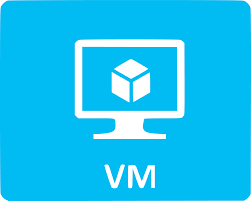What Is Virtual Machine Management In Cloud Computing?
Virtual Machine (VM) management is fundamental to cloud computing. It encompasses the creation, configuration, deployment, monitoring, and optimization of virtual machines within a cloud environment.

VM Lifecycle Management
Creation:
This step involves setting up a new virtual machine by defining parameters like CPU, memory, storage, and networking based on the specific workload requirements.
Configuration:
After creation, the VM is configured to meet its intended purpose. This includes installing the operating system, setting up applications, and adjusting settings for optimal performance and security. Configuration also involves network and storage settings.
Deployment:
Once configured, the VM is launched and integrated into the IT infrastructure, becoming accessible to users and applications. Deployment includes establishing necessary system connections to ensure seamless communication within the environment.
Monitoring:
Continuous monitoring is essential to track performance metrics such as CPU, memory, disk I/O, and network traffic. This step ensures that the VM operates efficiently and meets the organization’s service level requirements.
Scaling:
As workload demands change, scaling adjusts the resources allocated to the VM. Vertical scaling adds resources to the existing VM, while horizontal scaling creates additional VMs to handle increased demand.
Maintenance:
Regular maintenance tasks, including software updates, patching, backups, and health checks, are performed to ensure security, stability, and compliance.
Decommissioning:
When the VM is no longer needed, it is properly shut down, backed up, and removed, freeing resources and reducing costs.
Cloud VM Management Platforms

Public Cloud Providers:
Services like Amazon Web Services (AWS) with Elastic Compute Cloud (EC2), Microsoft Azure with Virtual Machines, and Google Cloud with Compute Engine offer robust and scalable tools for managing virtual machines (VMs) in a public cloud environment. These platforms provide extensive resources for creating, configuring, deploying, and monitoring VMs, allowing organizations to easily scale their infrastructure to meet changing demands.
Public cloud providers offer additional services such as automated backups, disaster recovery, and advanced security features, making them a preferred choice for businesses looking to leverage the power of cloud computing without the need to manage physical hardware.
Private Cloud Solutions:
Platforms like OpenStack and VMware vSphere provide organizations with the ability to manage VMs within a private cloud environment. These solutions allow for greater control and customization of the infrastructure, enabling businesses to tailor their cloud environment to specific needs.
Private cloud solutions are ideal for organizations that require enhanced security, compliance, and performance, as they offer dedicated resources and tighter control over data.
Hybrid Cloud Management:
Solutions like VMware Cloud on AWS enable seamless management of VMs across both private and public clouds. These hybrid cloud platforms provide the flexibility to optimize workloads, balance costs, and enhance business continuity by integrating the best of both worlds.
Key Management Tasks and Tools
Provisioning:
Automating the setup and configuration of virtual machines (VMs) is essential for efficient cloud management. Tools like Terraform, AWS CloudFormation, and Azure Resource Manager enable organizations to streamline the provisioning process by defining infrastructure as code. This automation reduces manual intervention, minimizes errors, and ensures consistent deployment across environments.
These tools allow administrators to specify resource configurations, such as CPU, memory, storage, and networking, in a repeatable and scalable manner, making it easier to manage complex cloud infrastructures.
Monitoring and Analytics:

Effective VM management requires continuous monitoring and analysis to ensure optimal performance and resource utilization. Tools such as Nagios, Prometheus, and Datadog provide real-time insights into various metrics, including CPU usage, memory consumption, disk I/O, and network traffic.
These tools help detect anomalies, prevent potential issues, and optimize resource allocation, thereby improving the overall efficiency and reliability of the cloud environment.
Security:
Protecting VMs from threats is a critical aspect of cloud management. Security measures include firewalls, intrusion detection systems, and regular updates. Tools like AWS Security Groups, Azure Security Center, and third-party solutions like Trend Micro safeguard VMs by controlling access, monitoring threats, and applying security patches, ensuring data integrity and compliance.
Backup and Recovery:
Ensuring regular backups and robust disaster recovery plans is vital for data protection. Tools like Veeam, AWS Backup, and Azure Site Recovery automate the backup process, enabling organizations to recover quickly from failures and minimize downtime.
Challenges in VM Management

Resource Allocation:
Efficiently distributing resources across multiple virtual machines (VMs) is essential to maintain performance levels. This process involves assigning CPU, memory, storage, and network resources to VMs in a way that maximizes their efficiency without overloading any single VM or wasting resources.
Automated tools can dynamically adjust resource allocations based on real-time demands, ensuring that each VM receives what it needs to function optimally while minimizing resource contention.
Performance Optimization:
Ensuring that VMs operate optimally under varying workloads is crucial for maintaining service quality. This requires continuous monitoring of performance metrics such as CPU usage, memory consumption, and disk I/O. Techniques like load balancing, caching, and both vertical and horizontal scaling are employed to manage fluctuating workloads, ensuring that VMs maintain high performance even during peak demand periods.
Security:
Safeguarding VMs against unauthorized access and data breaches is a critical aspect of VM management. Security measures include firewalls, encryption, intrusion detection systems, and regular software updates.

By implementing strict access controls and monitoring for vulnerabilities, organizations can protect sensitive data and ensure that their VMs remain secure from external threats.
Cost Management:
Effective cost management involves optimizing resource usage to control cloud expenses. This includes right-sizing VMs, utilizing reserved instances, and eliminating unnecessary resources. Cost management tools help monitor and reduce expenses, allowing organizations to maximize their cloud investment.
High Availability:
Ensuring continuous VM service through redundancy and failover mechanisms is vital for minimizing downtime. By deploying VMs across multiple data centers or availability zones and automating failover processes, organizations can maintain service continuity even during disruptions, ensuring that their applications remain accessible at all times.
Tools and Technologies

Cloud Management Platforms:
These platforms provide a centralized interface for managing virtual machines (VMs) and other cloud resources, streamlining operations and enhancing efficiency. Examples include the AWS Management Console, Azure Portal, and Google Cloud Console, each offering unique features and functionalities that cater to diverse user needs.
Users can provision, monitor, and manage resources seamlessly from these interfaces, allowing for improved governance and control over cloud environments.
Virtualization Software:
This software is essential for the creation and management of VMs. Solutions such as VMware vSphere, Hyper-V, and KVM enable organizations to run multiple VMs on a single physical server, optimizing hardware usage and increasing operational efficiency. These platforms support various guest operating systems, providing flexibility and scalability in cloud environments.
Configuration Management Tools:
Tools like Ansible, Puppet, and Chef automate the configuration and deployment of VMs. They help enforce consistent settings and policies across environments, reducing manual errors and saving time during deployments. These tools ensure that VMs are configured according to predefined standards, enhancing security and compliance.
Monitoring and Logging Tools:

Collecting and analyzing performance data from VMs is vital for maintaining optimal operations. Tools such as Nagios, Zabbix, and the ELK Stack provide insights into system health, resource utilization, and performance metrics. This will enable proactive management.
Orchestration Tools:
Managing large-scale VM deployments and scaling can be complex, which is where orchestration tools like Kubernetes and Docker Swarm come into play. These platforms automate the deployment, scaling, and management of containerized applications, facilitating seamless operations in dynamic cloud environments. They enable organizations to maintain flexibility and efficiency while handling fluctuating workloads.
Future Trends

Automation and Orchestration:
The growing adoption of automation tools and orchestration platforms, such as Kubernetes, is transforming the management of virtual machines (VMs) and containers. Automation simplifies repetitive tasks, enabling IT teams to focus on more strategic initiatives while improving operational efficiency.
Orchestration platforms streamline the deployment, scaling, and management of containerized applications, allowing organizations to manage complex environments with ease. By automating resource allocation and service deployment, organizations can respond rapidly to changing workloads, improving overall agility and performance.
AI and Machine Learning:
Leveraging artificial intelligence (AI) and machine learning (ML) is revolutionizing VM management tasks. These technologies enhance processes such as predictive scaling, where algorithms analyze historical data to forecast resource needs, enabling organizations to adjust resources proactively.
Additionally, AI/ML can assist in anomaly detection, identifying unusual patterns in performance metrics that may indicate underlying issues. This proactive approach helps prevent downtime and enhances system reliability, ensuring that applications remain available and performant.
Serverless Computing:

The shift towards serverless computing represents a significant change in cloud architecture. By embracing serverless models, organizations can reduce their reliance on traditional VMs, allowing them to focus on code development without worrying about server management. This architecture enables automatic scaling and optimizes resource usage, leading to cost savings and increased operational efficiency while supporting rapid application development.
Benefits of Effective VM Management
Improved Resource Utilization:
Maximizing the efficiency of physical hardware usage is essential for organizations looking to optimize their IT infrastructure. By effectively allocating resources such as CPU, memory, and storage across multiple virtual machines (VMs), organizations can ensure that physical hardware is utilized to its fullest potential. This not only reduces waste but also allows for a more sustainable approach to managing resources, leading to better overall performance.
Increased Agility:
The ability to quickly provision and de-provision VMs enables organizations to adapt to changing demands in real-time. This agility is crucial in today’s fast-paced business environment, where workloads can fluctuate dramatically. Rapid provisioning allows teams to deploy new applications or services as needed, while de-provisioning helps free up resources when they are no longer required, ensuring optimal utilization.
Cost Reduction:
Optimizing resource allocation is key to preventing overprovisioning, which can lead to unnecessary costs. By analyzing usage patterns and adjusting resource allocations accordingly, organizations can minimize expenses while maintaining performance levels.
Enhanced Performance:
Continuous monitoring and optimization of VMs are essential for maintaining optimal performance. Regular assessments help identify bottlenecks and resource constraints, enabling proactive adjustments.
Improved Reliability:
Implementing high availability and disaster recovery measures ensures greater reliability. TGis will safeguard against potential failures and minimizing downtime, ultimately supporting business continuity.
[Want to learn more about virtual machine management in cloud computing? Click here to reach us.]
Conclusion
In conclusion, effective virtual machine management is a vital component of cloud computing that enables organizations to optimize resource utilization, enhance performance, and ensure security. By leveraging advanced tools and technologies, such as automation and orchestration platforms, businesses can streamline the deployment and management of VMs, allowing for greater agility and responsiveness to changing demands.
Furthermore, the integration of artificial intelligence and machine learning enhances VM management by facilitating predictive scaling and anomaly detection. This will lead to improved operational efficiency.
As organizations increasingly adopt serverless architectures, the reliance on traditional VMs may evolve; however, the principles of effective management remain critical. By prioritizing resource allocation, performance monitoring, and reliability measures, companies can navigate the complexities of cloud environments with confidence.
Bobcares offers comprehensive virtual machine support services, providing expertise in managing and optimizing VMs to ensure seamless operations and reduced downtime. By partnering with Bobcares, businesses can enhance their VM management strategies, drive cost savings, and foster innovation.
Ultimately, investing in robust virtual machine management, supported by specialized services, will position businesses for success in an ever-evolving digital landscape, maximizing the benefits of cloud technology and ensuring sustainable operational excellence.







0 Comments